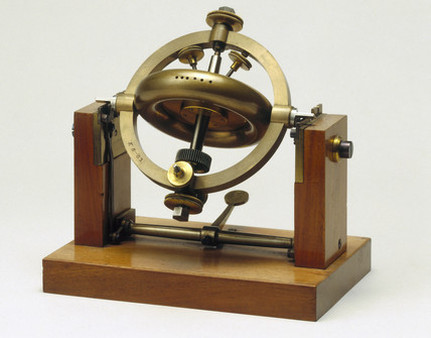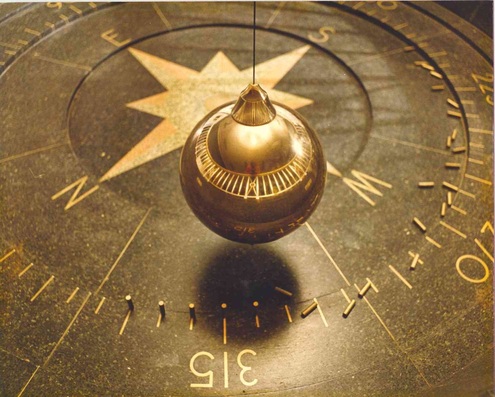My mom and I always say that my gyroscope was born broken as if it was some kind of internal geographical positioning device. Call it a GPS or my navigation habilities if you will. Truth is I don't seem to have this talent - though sometimes I surprise myself knowing directions quite well -, and worse, this is not the true use or definition of a gyroscope!
Like I said yesterday, the name "Gyroscope" is credited to Foucault, although he wasn't the one who invented it.
The gyroscope itself is a device used for measuring and/or mantaining orientation, based on the principles of angular momentum. Its mechanics are like so: it is a spinning wheel or disc with a free axle that can assume any orientation. That orientation may not stay fixed, but it changes less and in a different direction in response to an external torque than it would do without the large angular momentum associated with the disc's high rate of spin and moment of inertia. So, the orientation of the device remais nearly fixed, regardless of the motion of the mounting platform.
It can be used inn inertial navigation systems where magnetic compasses would not work (such as the Hubble telescope) or would not be precise enough, or for the stabilization of flying vehicles like radio-controlled helicopters or unmanned aerial vehicles. Due to their precision, gyroscopes are also used in gyrotheodolites to maintain direction in tunnel mining.
Based on those descriptions, then, I guess my "inner gyroscope" is practically absent.
Like I said yesterday, the name "Gyroscope" is credited to Foucault, although he wasn't the one who invented it.
The gyroscope itself is a device used for measuring and/or mantaining orientation, based on the principles of angular momentum. Its mechanics are like so: it is a spinning wheel or disc with a free axle that can assume any orientation. That orientation may not stay fixed, but it changes less and in a different direction in response to an external torque than it would do without the large angular momentum associated with the disc's high rate of spin and moment of inertia. So, the orientation of the device remais nearly fixed, regardless of the motion of the mounting platform.
It can be used inn inertial navigation systems where magnetic compasses would not work (such as the Hubble telescope) or would not be precise enough, or for the stabilization of flying vehicles like radio-controlled helicopters or unmanned aerial vehicles. Due to their precision, gyroscopes are also used in gyrotheodolites to maintain direction in tunnel mining.
Based on those descriptions, then, I guess my "inner gyroscope" is practically absent.
~Ally






 RSS Feed
RSS Feed